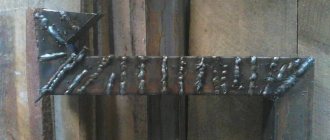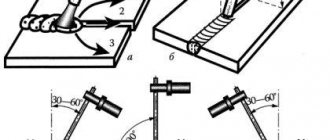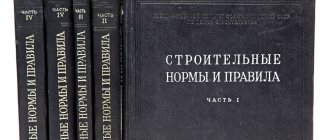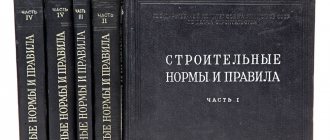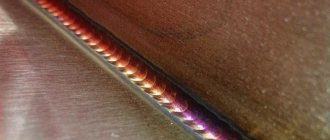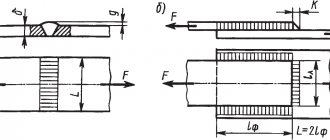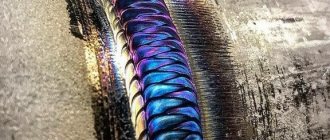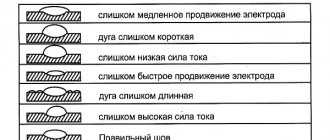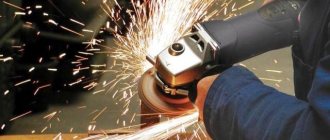Welding is a long-known method of fastening metal structures. It has many advantages, but there are also disadvantages, such that they can easily ruin all the work done previously. To minimize the impact of these shortcomings, various methods of protecting metal structures are used. Among them is weld processing. It is discussed further below.
What is the need for processing?
Welding affects the metal structures being held together more than it seems. At this moment, the parts develop a lot of internal stress. And because of it, they can become deformed and become more fragile, which leads to rapid destruction.
Welding also affects the chemical, physical and mechanical properties of metals, since uneven heating of parts during the bonding process leads to disruption of the crystal lattice of the material.
To restore lost properties to parts, processing is done at the bonding points. Stripping helps not only strengthen the structure, increase its ductility, but also protect welds from corrosion and rust.
Stripping equipment
The choice of technology must be approached carefully. You need to select the right consumables and work equipment.
This could be a wire brush, an angle grinder/machine with abrasive wheels, or a grinder.
When choosing grinding equipment, you should focus primarily on the power output. And only then look at consumption indicators.”
For example, mobile sanding machines are successfully used in the shipbuilding industry. It’s easier to approach a large workpiece than to try to move it to a new location.
Mobile grinding machine
Methods for processing welds
Cleaning welded areas is a difficult process, requiring skills and sometimes complex equipment. The first thing you need to do whenever processing welded areas is to choose a method. There are only three main ones:
- Mechanical . It assumes that areas will be cleared with manual tools. Effectively removes scale.
- Thermal . Here you need heating and cooling according to a scheme selected according to the material of the part. It heats up either completely or only in the stripping area.
- Chemical . A compound is applied to the area that strengthens it and protects it from corrosion. Typically this method is used on those parts that are used in active environments.
It is impossible to say which method of cleaning welds after welding is the best, since each will be useful in some way.
There are often situations when all three methods are used sequentially on the same seam.
Video text
Greetings! To begin with, I recommend good online stores - goods and services at an affordable price:
Useful products - online store "Gearbest": https://goo.gl/riFbzo Necessary and useful - online store - "Aliexpress": https://goo.gl/242qIr Lots of necessary products - online store - "Banggood": https ://goo.gl/U7l3Kp Knife store - “Knives”: https://goo.gl/pPjgRj
Earn money from your video with affiliate programs:
Make money on your video with - "AIR": https://goo.gl/R7C0pK Make money on advertising in videos with - "Admitad": https://goo.gl/1qvZqN
Greetings! To start with the recommendations, the channel is Autobreaker https://www.youtube.com/channel/UCsrH. And to our topic today. In this video I will tell you and show you how to properly clean (file) weld seams. It seems that this is a simple process, but it has its own nuances, namely, do not burn the metal, do not take more than necessary samples and, of course, go over with a brush to prepare the surface for puttying.. I will talk about all this in detail in the video. Well, as usual, like the video if you liked it, ask if something was not clear... Comment and don’t forget to subscribe to my channel! Enjoy watching!
Melody in the video, author: Routenote Tvoi Rai · Air Tvoi Rai ℗ Air
source
Heat treatment
Thermal stripping is most often suitable for structures with thin walls, such as pipelines, reactor vessels, pressure vessels, etc.
The procedure will restore the strength of the material, reduce the effect of internal metal stress on the seams, and also ensure durability of the joints. And because of this, the entire structure will become more reliable. But all these benefits can be obtained if the work is performed by a specialist. After all, the slightest mistake will lead to defects that cannot be corrected. It is also important that high-quality tools are used during thermal stripping, however, they will be very demanding on energy, this will also need to be taken into account.
The technology itself for thermal stripping of seams assumes that the part will first be heated and then cooled in compliance with the correct temperature regime.
Heat treatment restores metal strength and improves joint properties
The heat treatment process involves first heating the area around the seam and the seam itself. The part remains in this state for a period of time (depending on the processing method), and then cools.
Quality control
When carrying out welding work and grouting the resulting seams on metal, one should be guided by the rules and regulations set forth in GOST 31385-2008 (requirements for welding and quality control of welded joints). In this GOST you can find general requirements for carrying out such work, individual requirements for various properties of products (strength, impact strength, technological bending tests of such joints).
Also there you can find tables with maximum values of seam convexity in millimeters (depending on their size), a list of methods that allow you to control the quality of welded joints.
You can learn how to ideally clean welding seams on a profile pipe from the video below.
Chemical treatment
Here, cleaning of welded areas will be carried out only by etching or passivation.
Seam etching is carried out before mechanical grinding. To do this, chemical compounds are used that create an anti-corrosion coating at the joints. Etching can remove oxidized nickel and chromium from metal structures, which will cause rust if left.
How etching agents are used depends on the size of the areas to be protected and the type of metal. This will affect processing time and whether the part will be completely covered in the etching solution or only a small portion will be covered.
Chemical treatment protects the metal from oxides and rust
Another method for cleaning welded areas is passivation. Here the compounds used, oxidants, will gently remove free metal from the surface, and then form a corrosion-resistant film.
However, passivation treatment uses strong reagents. Therefore, afterward, their residues must be washed off the metal part, and the water in which the washing was carried out must be properly disposed of.
The solution itself, which was used for passivation, will contain acids. It must be neutralized with alkali, then filtered, and then disposed of according to regulations.
IRomanoff › Blog › Abrasives I use.
Hi all! I was once reproached for using materials and working methods that a “mere mortal” should not know about. They say this is the lot of professionals, not garage craftsmen. I categorically disagree with such statements and believe that any person with access to the Internet can and should be aware of the state of affairs in those areas that interest him.
However, I decided to group in one place information about the minimum of materials and related devices that are simply necessary for body repair. I’m not talking about the painter yet, we will talk only and exclusively about the tin.
So, what kind of abrasives and tools do I use when working on the Bucket and why.
0. I try to use 3M abrasive materials - extremely high quality, brutal efficiency and durability at a considerable price. However, the material consumption is so insignificant that you can simply forget about the price. Therefore 3M.
1. First of all - adapters. They are needed to attach consumables with a Roloc mount to the tool. I use an adapter with a diameter of 75mm and M14 thread for an angle grinder and a spindle adapter for a drill. They look like this:
In fact, these are the main investments when starting to work with 3M - each costs about 800 rubles, but is purchased once for a lifetime.
2. Cleaning discs for an angle grinder, 75mm in diameter:
There are different ones for working on different materials, while the abrasive for stainless steel, non-ferrous metal and steel is different. The grain size, of course, varies greatly depending on the task. My interest in them is cleaning weld seams, so the grit size is 60+. The photo shows the latest discs with “Cubitron 2” abrasive - they cut extremely aggressively and are about three times more wear-resistant than “regular” discs. Cost - about 80 rubles / piece.
3. Scotch Brite grinding wheels for grinders, 75mm in diameter:
The main purpose is to remove paint and other coatings. The efficiency is brutal, it’s simply stupid to compare with wire brushes. Anti-gravel and protective coatings are torn off from the bottom simply playfully, without the use of force or violence to the instrument. The metal tinder is very light, almost barely scratching - great for finishing weld areas where repairs should not be visible. Cost - about 100 rubles / piece.
4. Scotch Brite grinding disc for drill. Diameter 100mm, thickness 13mm, can take the shape of complex surfaces (such as an internal corner at a corner):
The application is the same - stripping paint and anti-gravel. Wear resistance when used correctly is very high - it took one disk to cover the entire underhood of the Bucket. Cost - 650 rubles/piece.
With this simple set you can almost completely cover the issues of cleaning during auto repair. The only caveat is that Scotchbrites deteriorate from contact with the bitumen so beloved by our collective farmers. This is understandable - no one in their right mind has been pouring bitumen on cars on purpose for about 50 years now.

